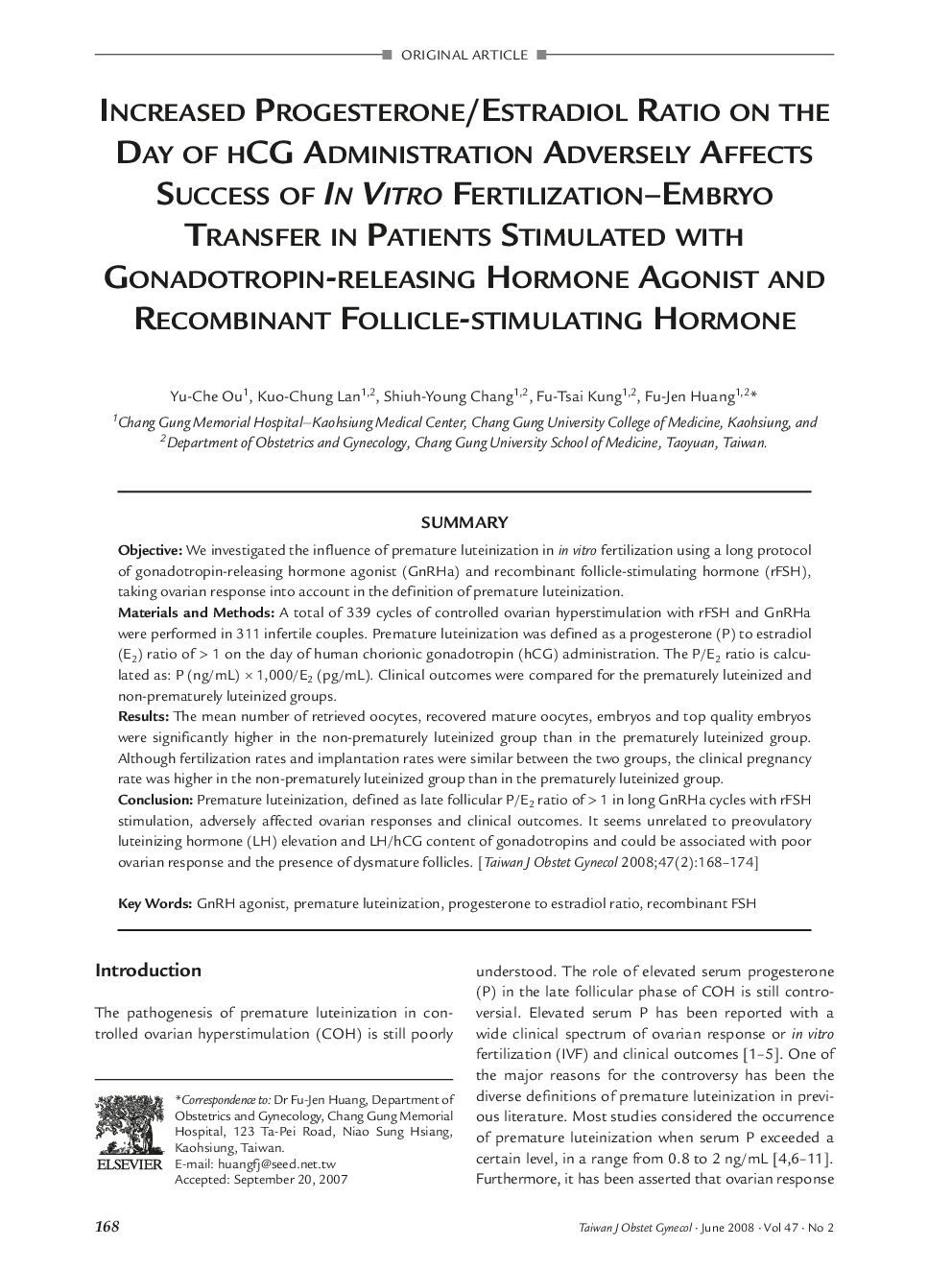| Article ID | Journal | Published Year | Pages | File Type |
|---|---|---|---|---|
| 3976002 | Taiwanese Journal of Obstetrics and Gynecology | 2008 | 7 Pages |
SummaryObjectiveWe investigated the influence of premature luteinization in in vitro fertilization using a long protocol of gonadotropin-releasing hormone agonist (GnRHa) and recombinant follicle-stimulating hormone (rFSH), taking ovarian response into account in the definition of premature luteinization.Materials and MethodsA total of 339 cycles of controlled ovarian hyperstimulation with rFSH and GnRHa were performed in 311 infertile couples. Premature luteinization was defined as a progesterone (P) to estradiol (E2) ratio of > 1 on the day of human chorionic gonadotropin (hCG) administration. The P/E2 ratio is calculated as: P (ng/mL) × 1,000/E2 (pg/mL). Clinical outcomes were compared for the prematurely luteinized and non-prematurely luteinized groups.ResultsThe mean number of retrieved oocytes, recovered mature oocytes, embryos and top quality embryos were significantly higher in the non-prematurely luteinized group than in the prematurely luteinized group. Although fertilization rates and implantation rates were similar between the two groups, the clinical pregnancy rate was higher in the non-prematurely luteinized group than in the prematurely luteinized group.ConclusionPremature luteinization, defined as late follicular P/E2 ratio of > 1 in long GnRHa cycles with rFSH stimulation, adversely affected ovarian responses and clinical outcomes. It seems unrelated to preovulatory luteinizing hormone (LH) elevation and LH/hCG content of gonadotropins and could be associated with poor ovarian response and the presence of dysmature follicles. [Taiwan J Obstet Cynecol 2008;47(2):1 68-1 74]
